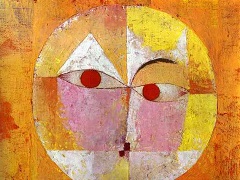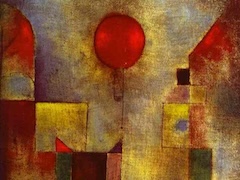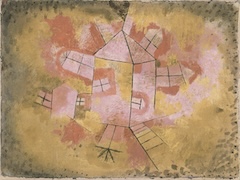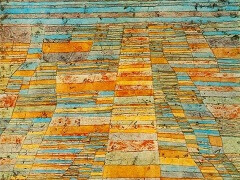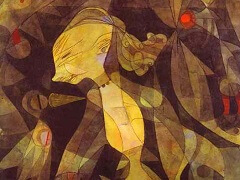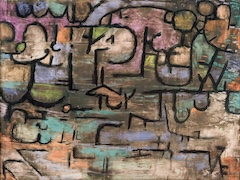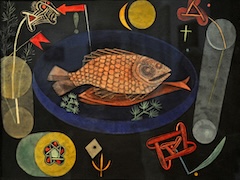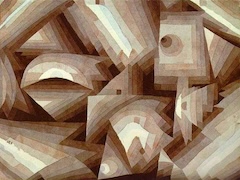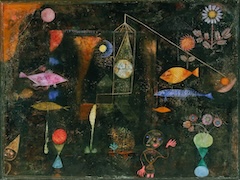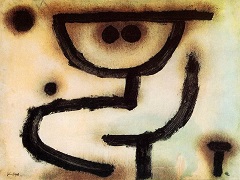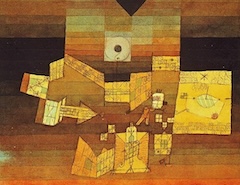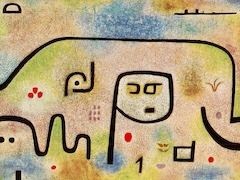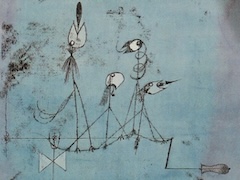Architecture, 1923 by Paul Klee

Architecture is part of the Magic Squares series where Klee, using color and chiaroscuro, studies the effects of the rhythmic repetition of identical elements, grouped "in such a pure and logical way that each one is in its correct place, and not one disturbs the order," according to the Pedagogical Sketchbook. No other artist has explored the domain of elementary geometrical forms as much as Klee did. He uses geometry, not only in order to create pure pictorial facts like in this painting, but also to explain organic life, as in the 1934 work Blossoming.
As Rene Crevel wrote in 1930:
The most simple materials, words or colors, serve as the intermediary between the world beyond and the seer. The poetry is contained in the discovery of unsuspected relationships of one element to another. The painter who found poetry in the dryest geometry will also know how to ascend after his dives."
Will Grohmann compares the series of Magic Squares with contemporary musical research, in particular the system of twelve tones invented by Schonberg in 1923, the same year as Klee painted Architecture.
I found a slip of paper among Klee's papers on which was a plan for one of his pictures; numbers were written in the squares, a series of numbers ran first in one direction then in the other, crossing each other. When the numbers are added along the horizontals and verticals, the totals are equal, as in the well-known 'magic square.'
In a psychic investigation of the most elementary geometrical figures and the internal structure of the material, its matrix and rhythmic forms, Klee finds an active principal of organization based on the same pulsation from which comes the creative being as well as the created universe. But the abstract forms used by Klee to translate this pulsation are only abstract in the way in which he puts them down. He works hard at discovering and then putting down the rhythm of 'great nature' as instinctive movements or urban centers.
This action has been thought about, in that all putting down of the work is of necessity an ordering process. By a controlled organization of form, color, and rhythm, Klee imposes an intelligible logic on th signs he invents and the meanings he discovers.

